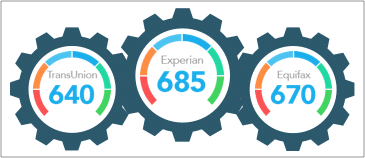Unemployed and living in his childhood bedroom, Andrew Josuweit had just become the first person in his family to finish college.
In 2009, America was inundated with mass layoffs, corporate bankruptcies and salary freezes. The Bureau of Labor estimated that one in every 10 Americans was out of work, and recent college graduates, particularly young men, suffered far worse. That year, more than 26 percent of them couldn’t land a job.
Despite an economics degree from one of the top business schools in the nation, Josuweit was waiting tables in his hometown and living with mom and dad.
And he’d just received his first student loan bill for a staggering $1,100.
“I couldn’t afford that,” says Josuweit, who chose the deferment route for the public portion of his outstanding loans. “That stopped the bleeding momentarily.” But he still had privately funded loans to contend with, and those don’t qualify for relief programs.
Overall, he had 16 different loans, which were serviced by four different providers. Over the next few years, Josuweit defaulted on two of the loans (partly because he moved several times and lost track of all the moving parts), racked up late penalties, and watched as interest and fees continued to accrue on his unpaid balances, which eventually peaked at $107,000.
There were a few months when I didn’t talk to my parents
Meanwhile, Josuweit’s credit score plummeted to the mid-300s.

His credit score wasn’t the only one affected. His parents, neither of whom had gone to college themselves, had cosigned for his student loans. Small business owners, his parent relied on credit to finance their business expenses. “Their credit score got dinged because I wasn’t making the payments. It led to a lot of tension in the house,” he says.
Compounding the problem, his parents were high school-educated and had not agreed with his choice of schools. “My dad didn’t think I needed to go to a ‘fancy private school.’ So they weren’t going to pay for my education,” he says.
Still, because they cosigned, they were also responsible for Josuweit’s financial obligations. Neither side understood the other’s perspective, and family relationships began to crumble. “There were a few months when I didn’t talk to my parents,” he says.
A New Start
Ultimately, it was a combination of the lessons he’d learned in his home while growing up and the student loan challenge he faced as a young college graduate that gave Josuweit the know-how and motivation he needed to overcome his seemingly impossible financial situation.
Growing up with entrepreneurial parents, he’d seen firsthand how to build and maintain a business. He’d launched his own first venture at age 14, when he opened a neighborhood landscaping business with several employees who were friends from school. “I was making $40 per hour while other friends were making $9 an hour by stocking shelves at the grocery store,” he says. “That completely transformed how I thought about earning income.”
That’s why, after six months of waiting tables while unsuccessfully searching for a corporate job, Josuweit had the courage to partner with a friend and launch a website design business. He earned just $13,000 that first year as a business owner, not nearly enough to make even his monthly loan minimum payments, but it was a start. Projects took him to Malaysia, Toronto and then Southern California, where he and his business cofounder were offered a $40,000 grant by the Chilean government to launch a new business venture.
That grant is what funded the launch of Josuweit’s current business, Student Loan Hero, an unbiased, online analytic system for student loan borrowers to help figure out if they qualify for a forgiveness program, while also custom-tailoring repayment programs.
The biggest obstacle for many student loan borrowers is that they aren’t making enough income
Josuweit took every problem he faced as a student loan borrower and used them to create a solution for others in a similar situation.
At the same time, as his business grew, he was digging himself out from his student loan debt and rebuilding his credit score in the process.
Taking Control
“The biggest obstacle for many student loan borrowers is that they aren’t making enough income” to cover their payments, says Josuweit. That’s why he’s focused primarily on increasing his income. “I went from $13,000 that first year to $30,000 the next,” he says. His income increased each year, and in 2015, he brought in six figures for the first time.
Over that time, “I was able to make on-time payments and get caught up on all my student loan payments that were delinquent,” he says. His loan balance is now less than half of what it once was, and he expects to pay off his balance by year-end.
He also found another way to boost his low credit score. “I didn’t have any credit cards because I didn’t qualify. My credit was so bad,” he says. To overcome that challenge and create a consistent payment history, he opened a card with a secured credit line. He deposited $2,000 and made on-time payments every month. “That lowered my delinquent rate,” he says.
Josuweit’s credit score hovers around 700 today, yet he keeps his credit usage low. “Now I’m so debt-averse,” he says. “The past few years have been really good, but 2009 to 2013 were so draining emotionally. There was so much anxiety and uncertainty.”
To avoid getting back in debt, he keeps his spending relatively low. He rides a bike and doesn’t own a car, he rents (“I don’t know if I’ll ever get a mortgage,” he says), and he recently moved from high-cost New York City to more-reasonably priced Austin, Texas, for a 30 to 40 percent decrease in his cost of living.
Today, he views his financial journey as a marathon, not a sprint. “When you’re young, it’s hard to be patient,” he says. Still, he was able to get where he is today by being frugal, increasing his income and developing a plan. “When I’m 30, everything will be paid off, and that’s a goal worth the wait.”



